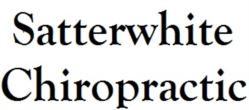Oxford Back Pain Linked with Sarcopenia and Back Muscle Degeneration
Sarcopenia finds many of us one day if we live long so long! Muscle degeneration comes with aging. Many of us won’t avoid it. It is the degenerative loss of skeletal muscle mass, quality and strength that comes with aging. But back pain awfulness is more related to degenerated back muscles than sarcopenia. The more back muscle degeneration, the more back pain is sufferered. (1) Satterwhite Chiropractic takes care of older Oxford back pain patients to manage their back pain and control its impact on their lives as they age gracefully.
MUSCLE DEGENERATION AND LIFE EXPERIENCE
Aging and life affect muscle strength. A new study reports that after having had a back surgery, post-surgical back pain patients’ MRIs showed muscle degeneration in all patients. Type 2 fatty degeneration was most frequently seen over other types of changes like inflammation and scarring. (2) Muscle degeneration contributes to patients’ experiences of back pain.
Listen to this PODCAST with Dr. James Cox on The Back Doctors Podcast with Dr. Michael Johnson who describes how Cox® Technic helps patients who have undergone back surgery work their back muscles and spine back into shape, no matter their age.
BACK PAIN AND MUSCLE DEGENERATION IN OLDER FOLKS
Chronic changes in back muscles are seen throughout the spine eventually. Acute changes right after injury are seen within a few days. Researchers set out to figure out if these changes came before or after the injury. They found that the multifidus muscle decreased quickly after lumbar injury at the level of injury. (3) In a recent study of patients over 65 years old, 40% of chronic low back pain patients had sarcopenia. 26.6% of the control group (those who didn’t have chronic low back pain) were affected by sarcopenia. The skeletal muscle mass was much lower and body fat ratio was much higher in the chronic low back pain group. Lumbar multifidis and erector spine muscles were much lower in the chronic low back pain group, too. (4) Oxford chiropractic patients with sarcopenia deal with back pain and other problems that chiropractic treats.
SARCOPENIA PAIN AND OTHER ISSUES’ EFFECTS
Satterwhite Chiropractic sees males and females with sarcopenia and other conditions in its Oxford chiropractic practice. Sarcopenia in patients with lumbar spinal stenosis was much more prevalent in females than males over 70 years of age. In another study, 13.9% of patients were affected by sarcopenia which was accompanied by dyslipidemia and cardiovascular disease. They also had lower body weight, body mass, grip strength, and walking distance. These patients experienced pain more deeply. (5) Your Oxford chiropractor knows this and gently handles their experience of pain and its source with gentle chiropractic treatment and exercise.
CONTACT Satterwhite Chiropractic
Schedule a Oxford chiropractic visit with Satterwhite Chiropractic for back pain issues associated with sarcopenia and back muscle degeneration. Aging, back pain and degeneration will not have to prevent you from enjoying your life!

